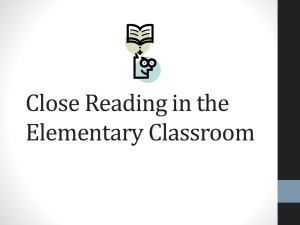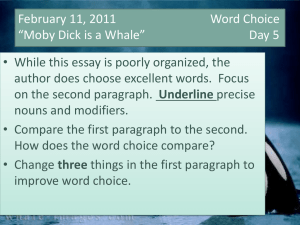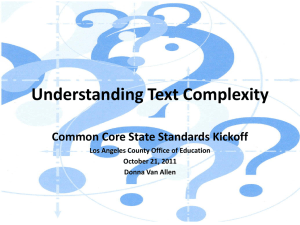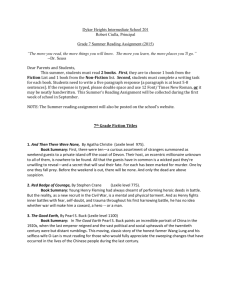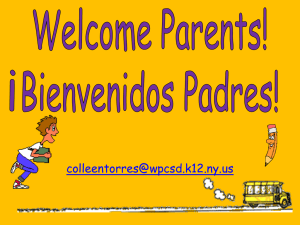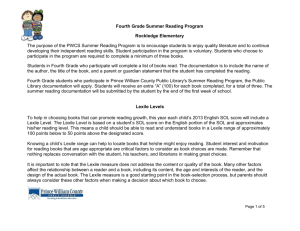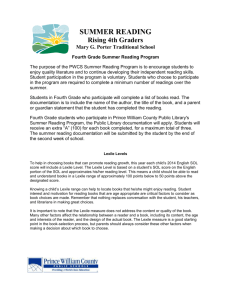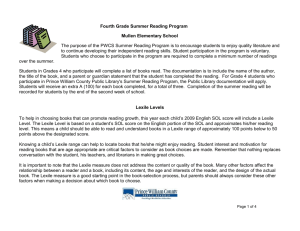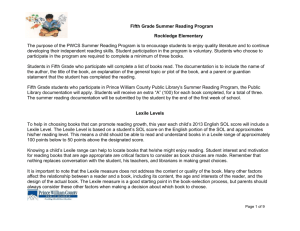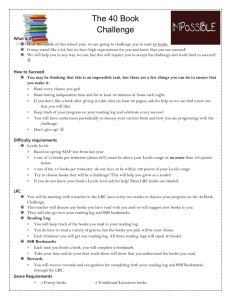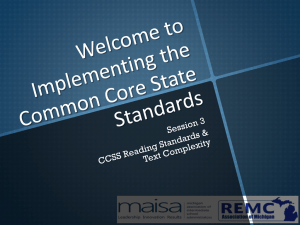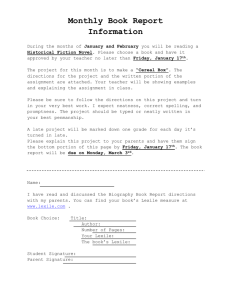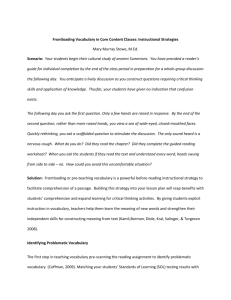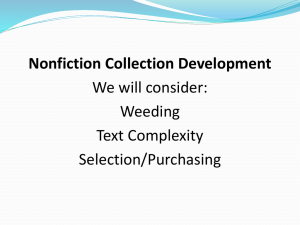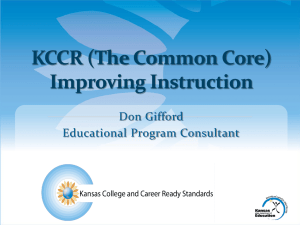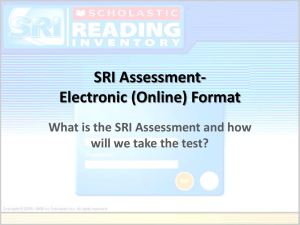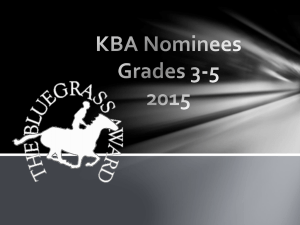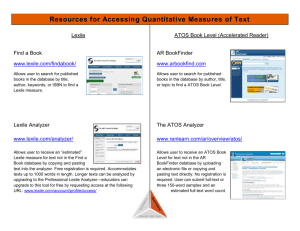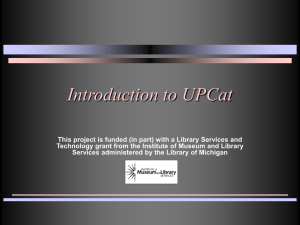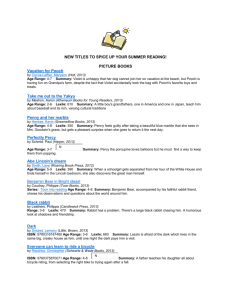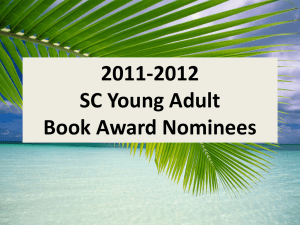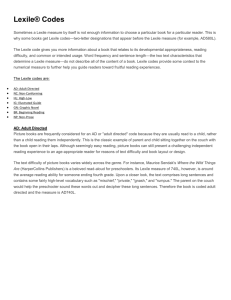Close reading in the Elementary Classroom
advertisement
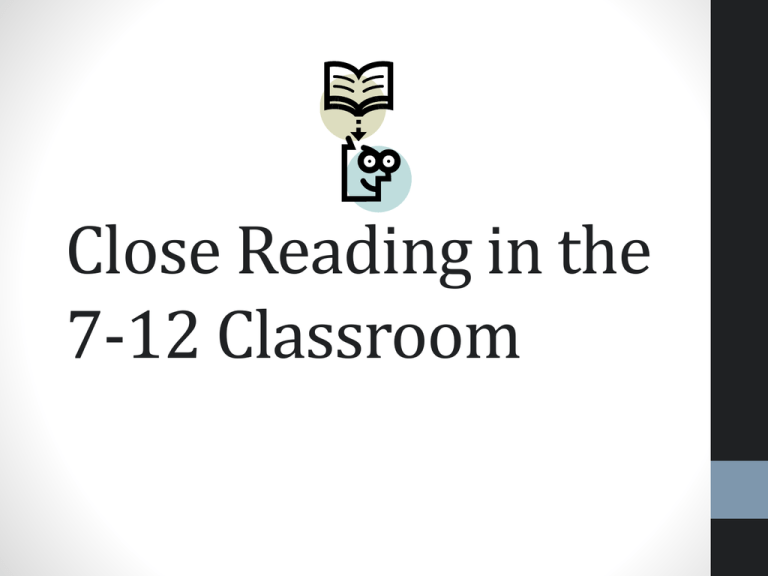
Close Reading in the 7-12 Classroom Pre-K-5 Balance of Informational text and Literature 6-12 Knowledge in the Disciplines Academic Vocabulary Close Reading Staircase of Complexity Writing from Sources Text-Based Answers What is close reading? • • • • Engaging with a text of sufficient complexity directly Examining meaning thoroughly and methodically Reading and re-reading Understanding the central ideas and key supporting details • Reflecting on: • the meanings of individual words and sentences • the order in which sentences unfold • the development of ideas over the course of the text • Ultimately arriving at an understanding of the text as a whole (PARCC, 2011, p.7) http://youtu.be/adXdTXEzmzE Selecting the right text is very important! Criteria for Text Selection Quantitative Qualitative Reader and Task • Aligned with the Lexile (or other computergenerated) levels outlined in the standards • Allows you to teach the skills described in the standards • Has a complex level of meaning, purpose, structure, language, and knowledge demand • Content-rich and interesting • Models the kind of thinking and writing students should aspire to in their own work Lexile Ranges Text Complexity Old Lexile Ranges Grade Band in the Standards K-1 N/A Lexile Ranges Aligned to CCR expectations N/A 2-3 450-725 450-790 4-5 645-845 770-980 6-8 860-1010 955-1155 9-10 960-1115 1080-1305 11-CCR 1070-1220 1215-1355 Go to www.lexile.com to analyze a text’s Lexile level for free. Types of Texts to Consider How to Support Students Basic Lesson Structure Beginner Intermediate Advanced 1. The teacher reads the text out loud to students without stopping to give them a sense of the overall plot or main idea. 1. The students read the text silently one time through to get a sense of the overall plot or main idea. 1. The student reads the text silently one time through to get a sense of the overall plot or main idea. 2. The teacher re-reads small chunks of the text at a time and asks discussion questions. The students may work in pairs first, but answers are shared with the whole group. 2. Teacher re-reads small chunks of the text out loud and asks discussion questions. Students may discuss the questions as a whole group, in pairs, or small groups. 2. The student re-reads small chunks of the text at a time, stopping to make notes, underline key points, and ask himself questions. 3. The students and 3. The students write a teacher develop a written written response to a response to a prompt prompt independently. together. 3. The student writes a response to a prompt and provides evidence from the text in his answer. Three Types of TextDependent Questions consider the following three categories: 1. 2. 3. Questions that assess themes and central ideas Questions that assess knowledge of vocabulary Questions that assess syntax and structure 11 When you're writing or reviewing a set of questions, Assessing Themes and Central Ideas • What is Lincoln saying is significant about America in the first paragraph? 12 Example: Assessing Vocabulary 13 Example: • Lincoln says the country was “conceived in Liberty.” What does he mean when he says this? Assessing Syntax Example: wolves are in the pack? To answer this, pay close attention to the use of commas and semi-colons in the last paragraph on pg. 377. The semi-colons separate or list each member in the pack. 14 • Who are the members of the wolf pack? How many Assessing Structure • “Dillard is careful to place opposing descriptions of the natural and man-made side-by-side. How does this juxtaposition fit with or challenge what we have already read? Why might she have chosen this point in the text for these descriptions?” 15 Example: Culminating Tasks • • Should relate to core understanding and key ideas. • Whenever possible, try to get your students to make claims or arguments and support them with evidence. Examples: • In the last paragraph of the “Gettysburg Address,” Lincoln shifts the focus of his speech away from what he says is its purpose at the end of the second paragraph. What reasons does he give for the shift in focus? What does Lincoln think is the task left to those listening to his speech? Use evidence from the text to support your analysis. Formulate an answer to these questions in a thoughtful brief essay. (Approximately a page). • Why is accurately predicting the weather such a difficult task for meteorologists? Use evidence from the text to support your answer. 16 A coherent sequence of text dependent questions will scaffold students toward successfully completing the culminating task. Progression of Text Dependent Questions Structure Vocabulary and Syntax Themes and Central Ideas Culminating Task Planning Close Reading Questions Stop After Question pg. 31 Why did the illustrator include details like the power outlets in the walls? How will students answer it? Discuss with a partner Type of Analysis Structure CCLS R.I.7.7 Practice • http://www.americanrhetoric.com/speeches/maryfisher1992r nc.html • At your table, read the first six paragraphs of A Whisper of Aids. • Design one of each of the following types of text dependent questions: • • • • Vocabulary Syntax Themes and Central Ideas Culminating Task • Choose one person to share your questions with the whole group. Using a Fish Bowl Discussion http://www.engageny.org/resource/a-protocol-for-citingevidence-from-informational-text-from-expeditionary-learning
